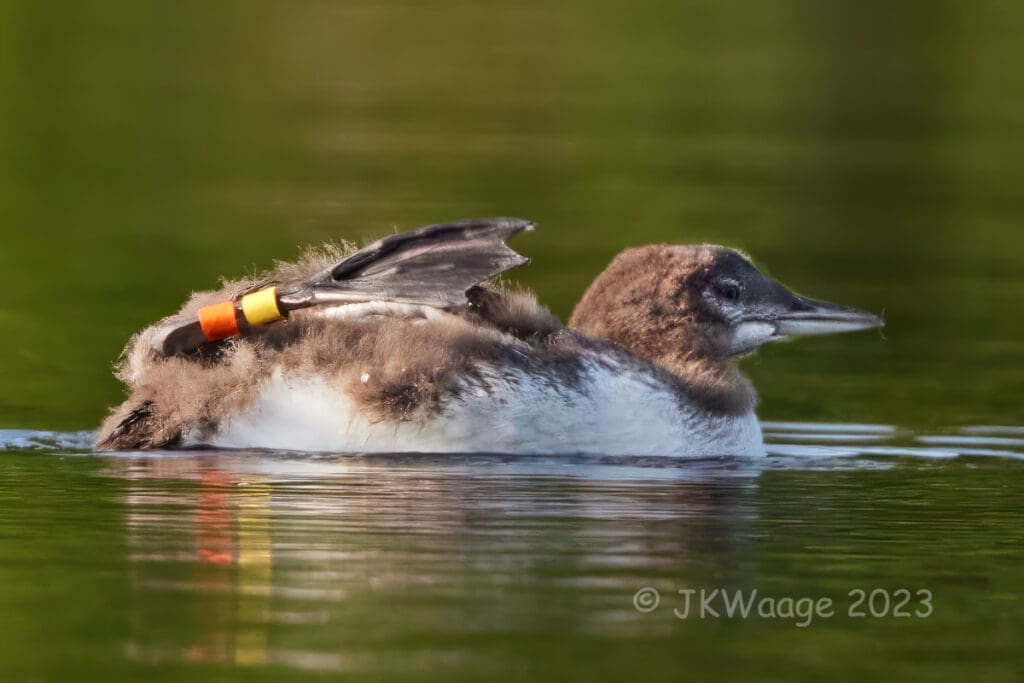Loons and Dragonflies
2023, No. 7 — August 6
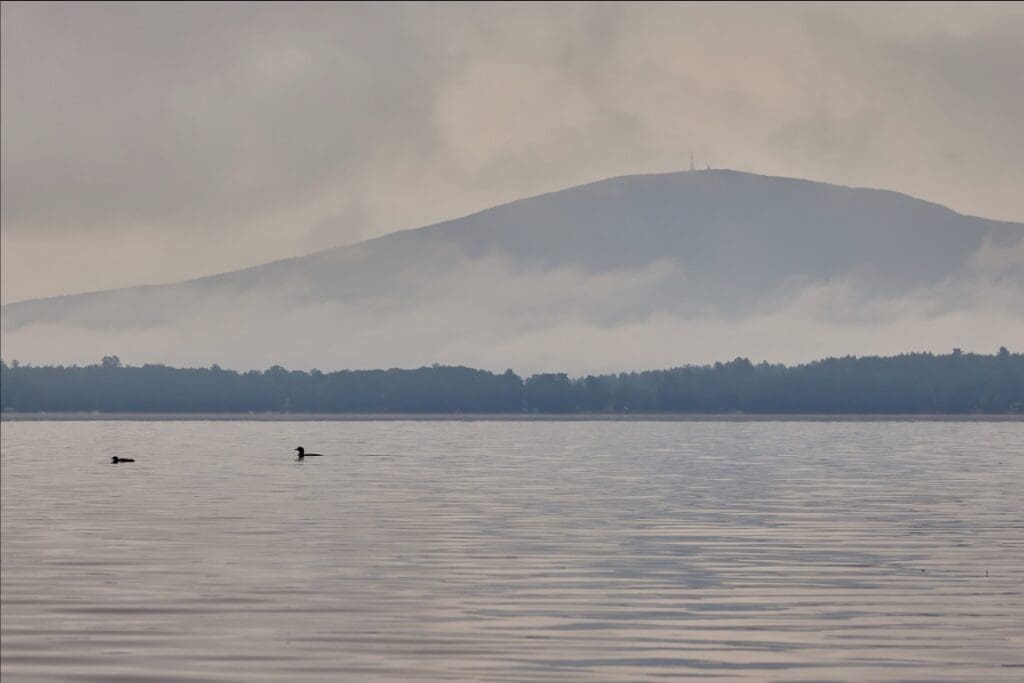
Paisley Grows and Molts
The gray damp weather has not been very helpful for exploring and photographing so far this summer. We hope to catch up soon. Meanwhile, an update on the Loons and some dragonflies that have managed to make it through the rain.
Paisley on July 13th at one month old. The chick had molted into its light brown fluffy down phase.
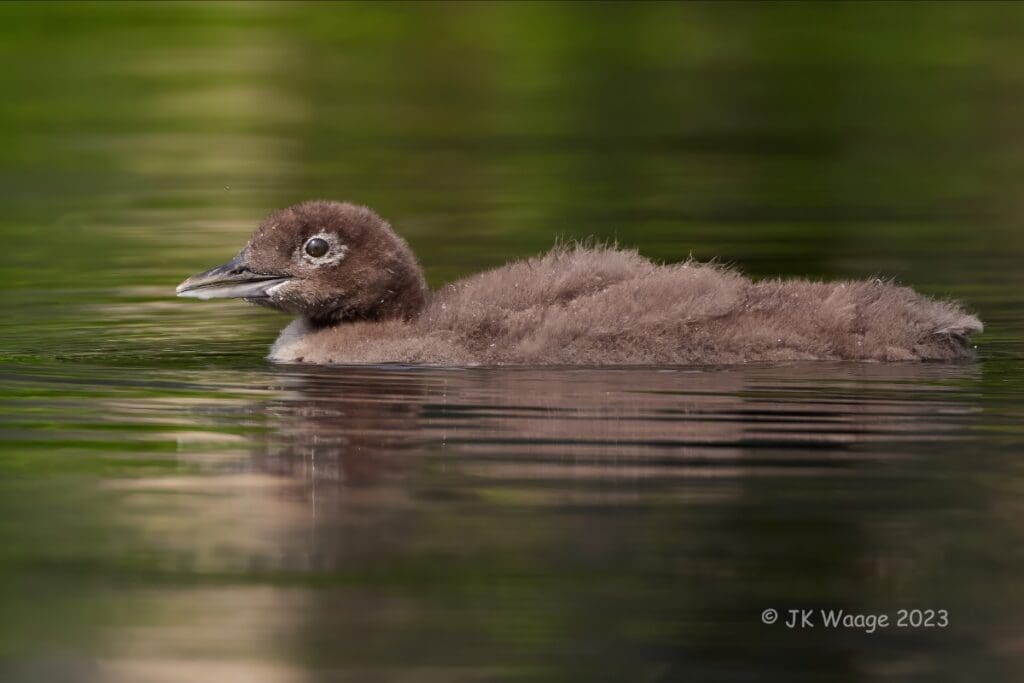
Paisley on July 13th at one month old. The chick had molted into its light brown fluffy down phase.

Now getting bigger fish to eat.
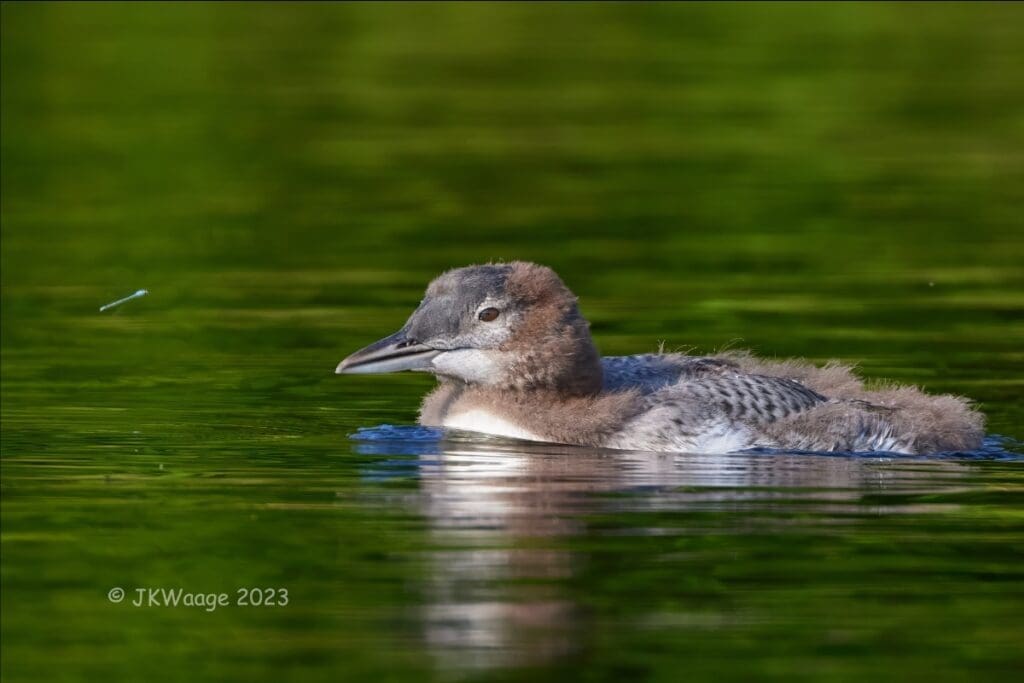
Two weeks later the molt into juvenile plumage is underway.
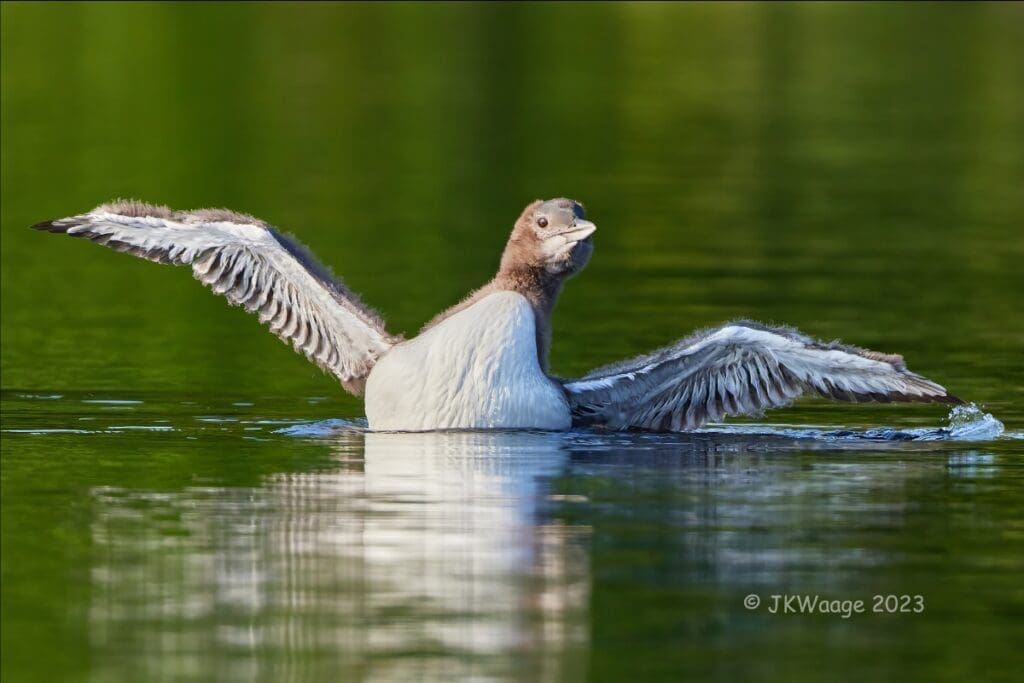
Paisley’s flight feathers are growing fast.
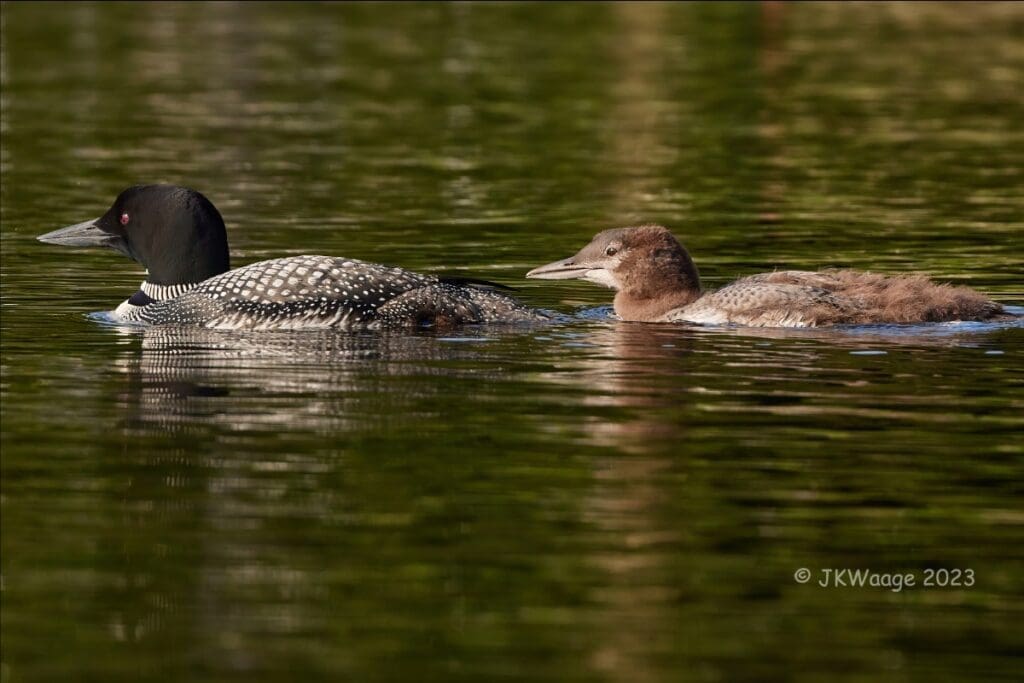
Not much smaller than Dad.
Paisley’s New Tags!
After dark on July 27th, Caroline Hughes and her crew of interns from LPC (Loon Preservation Committee) were able to catch and band Paisley. Jen’s photos from that night will give you an idea of the banding process and show you how big Paisley actually is. Banding is more than just putting on some colored plastic tags. The crew records body measurements and weight and takes blood and feather samples. All of this information is essential for monitoring the health and biology of New Hampshire’s Loons.

Caroline (green shirt) and our Sunapee Region Summer Intern, Dylan Ricker (Right) and two other interns with Paisley.

Paisley’s new leg bands. The silver one is the Federal Tag (left leg) and the others are the chick’s unique color code.
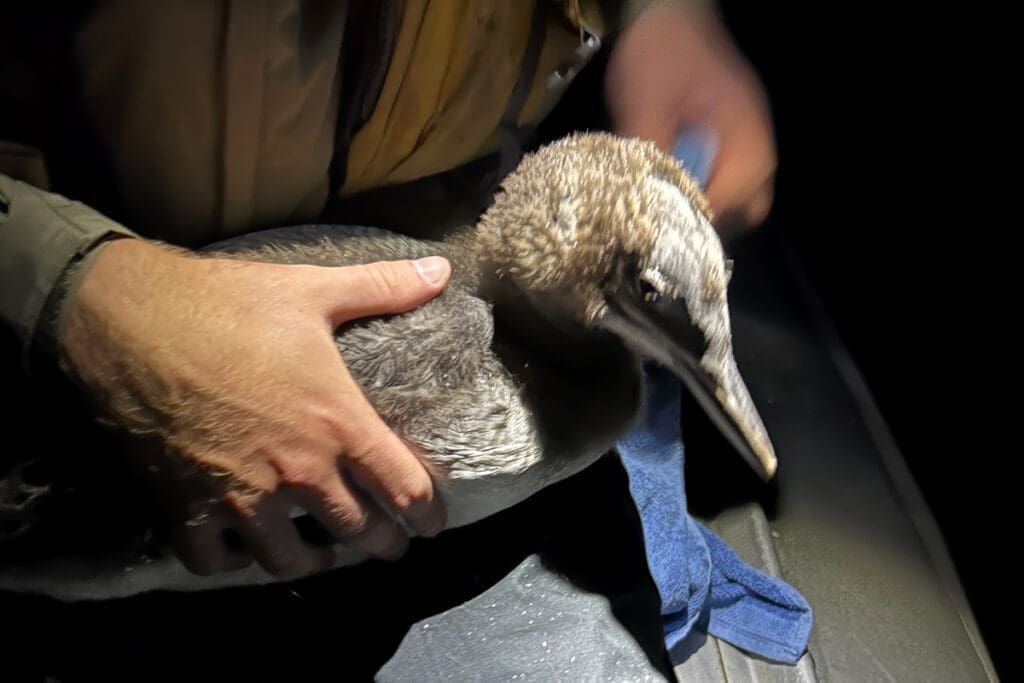
This photo really gives you a sense of Paisley’s size!
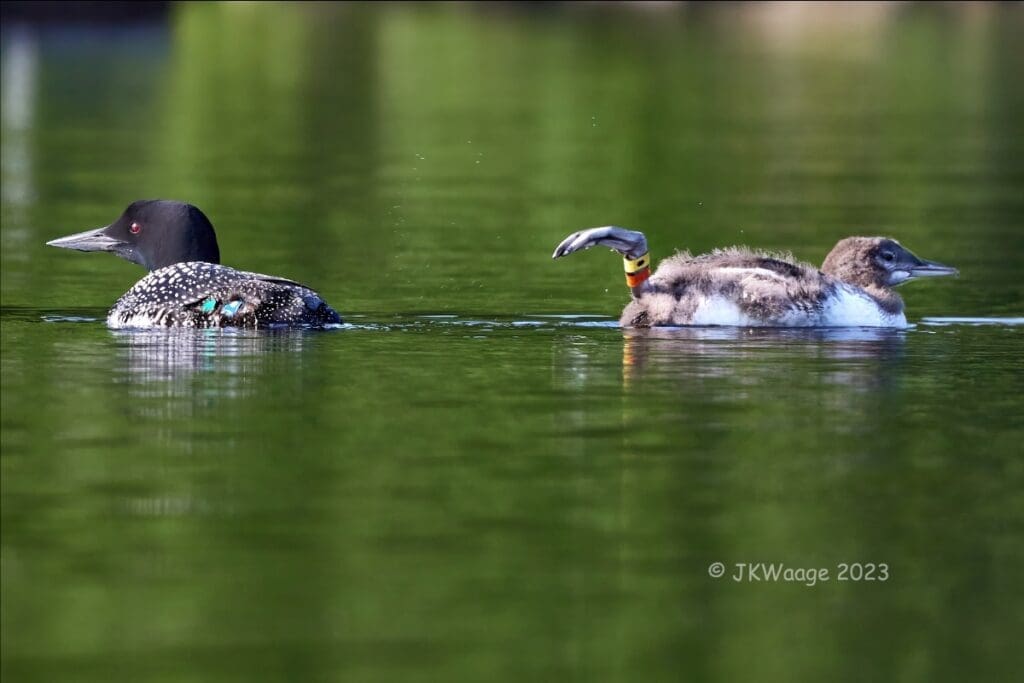
The next morning the chick was hanging out with Mom and showing off the new bands. Mom was showing her left leg bands as well.
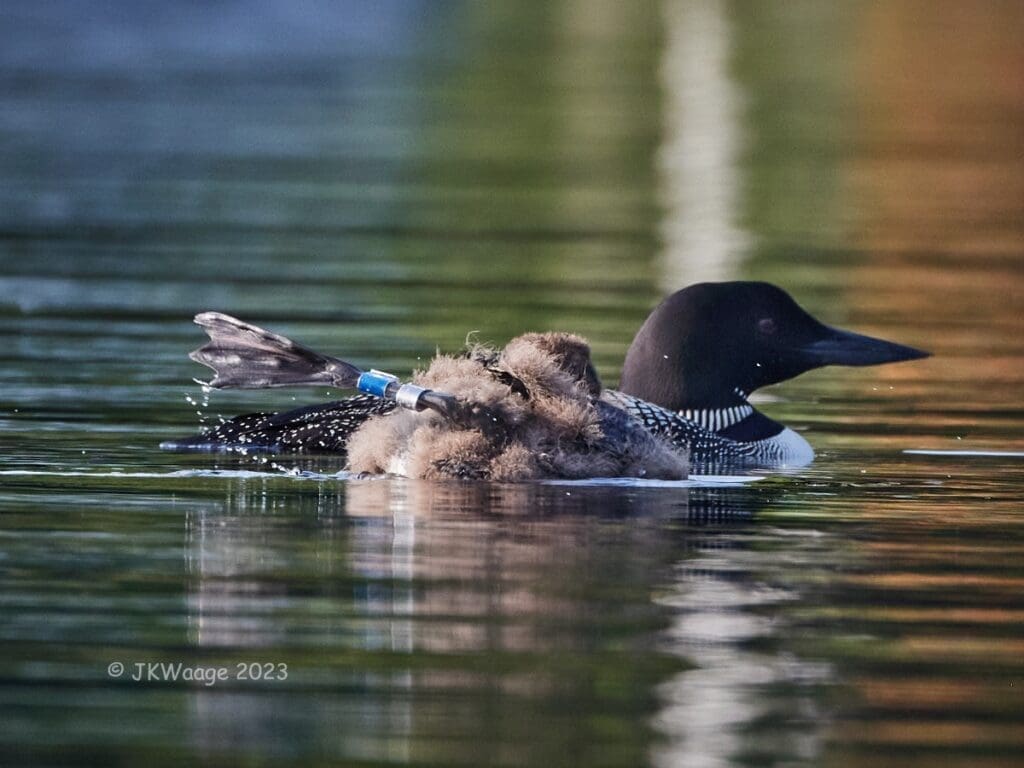
The metal band on the left leg has a unique number that would allow the USGS or Fish and Wildlife to identify Paisley.
We are so fortunate to have both parents and some of their chicks banded. This allows us to have a unique ability to understand what is going on with our Loons! Adult loons are nearly impossible to sex or identify without bands. Leg bands clearly tell us who we are watching.

Here is a photo from 2021 of a Loon crawling up on the nest to sit on its eggs. If our adults had not been marked that year, we would not have known if it was our male, our female, or another loon. We might have concluded it was ours and then thought that all the fighting that year resulted in our regular female being replaced by a new one.
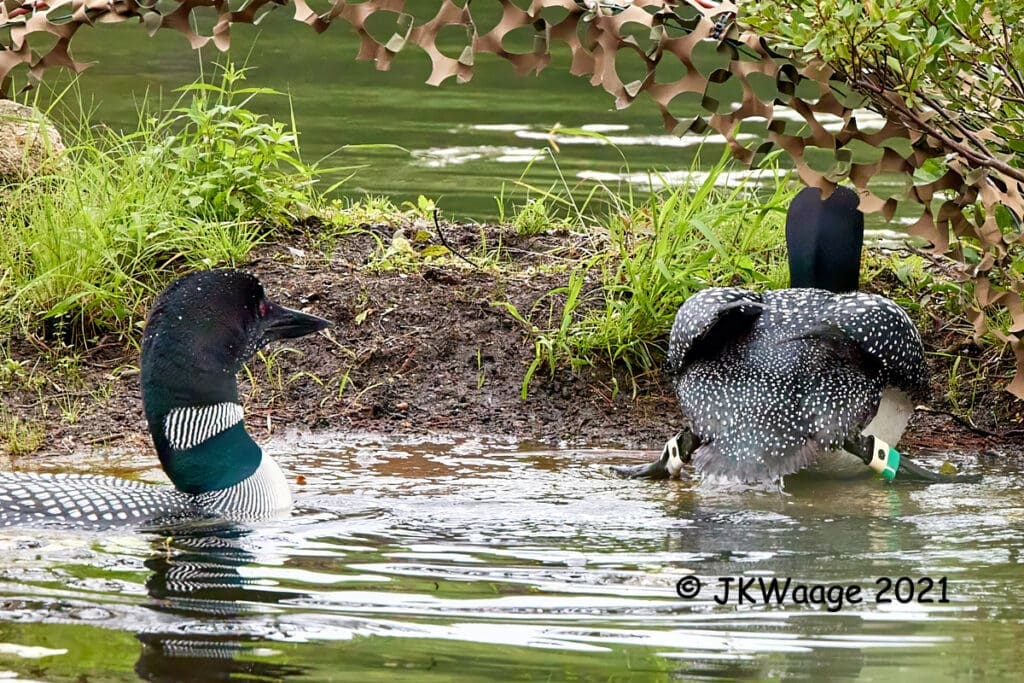
Because our pair is banded, we knew it was a new female and that our old female won her territory back. Here she is (with her old bands, since replaced) enticing our male to the nest after she won her place back. Thank you LPC!!
Midsummer Dragonflies
The rain has really knocked down the dragonfly population this summer, but the midsummer species are beginning to appear. When they emerge from their nymphal stage, they need time for their wings to expand and dry. Until then, they can’t fly and are vulnerable to being knocked to the ground by rain. Once able to fly they will move away from the Lake to mature and feed. The following are some dragonflies doing just that in our yard and nearby fields. Next newsletter – sun willing – we will be back with more about dragonflies and damselflies.
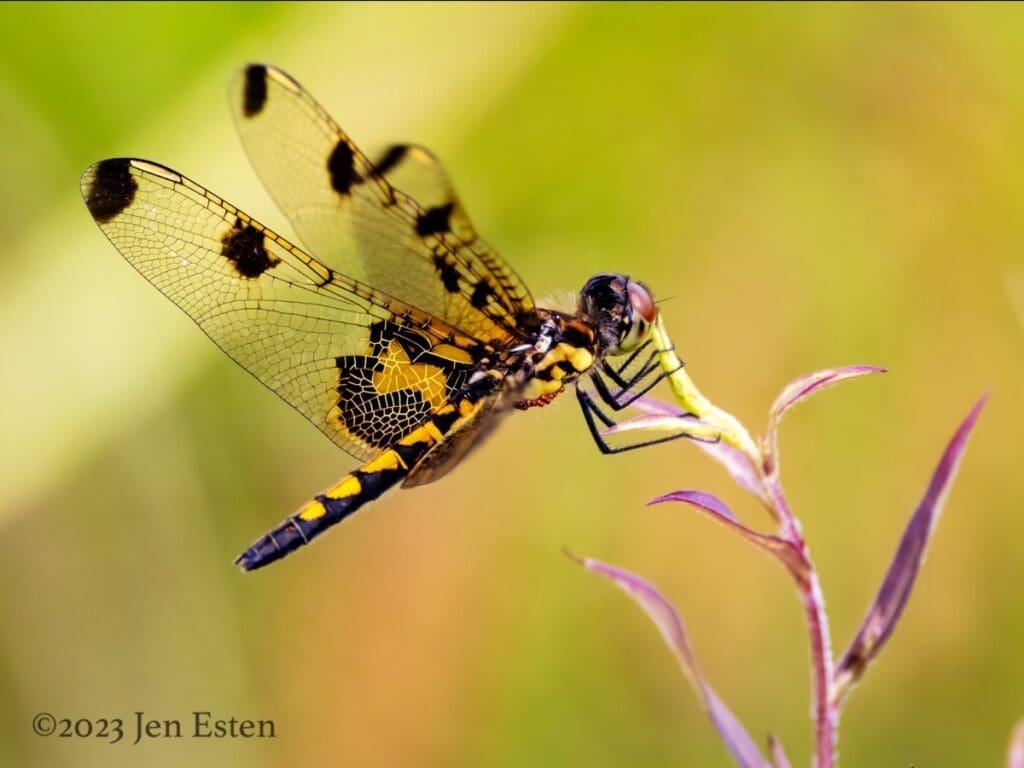
Female Calico Pennant ready to head to a pond if the sun stays out.
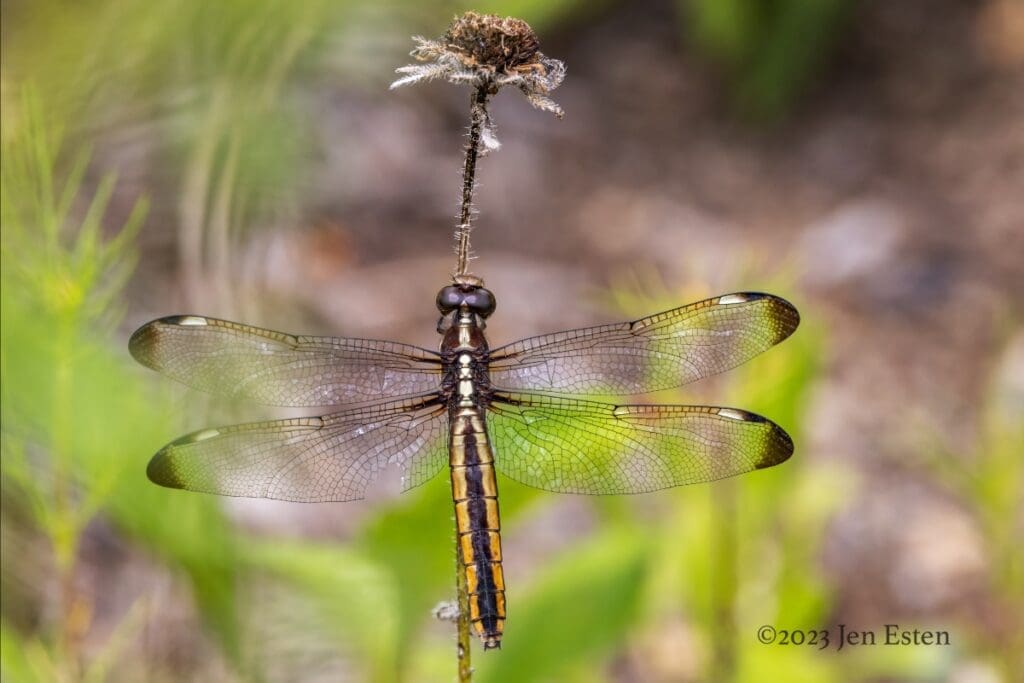 Female Spangled Skimmer showing the unusual black and white pterostigmae (front of wings near tips) that make this species easy to identify.
Female Spangled Skimmer showing the unusual black and white pterostigmae (front of wings near tips) that make this species easy to identify.

Eastern Pondhawk females are a striking mix of green, black and white. The male is mostly bluish green.
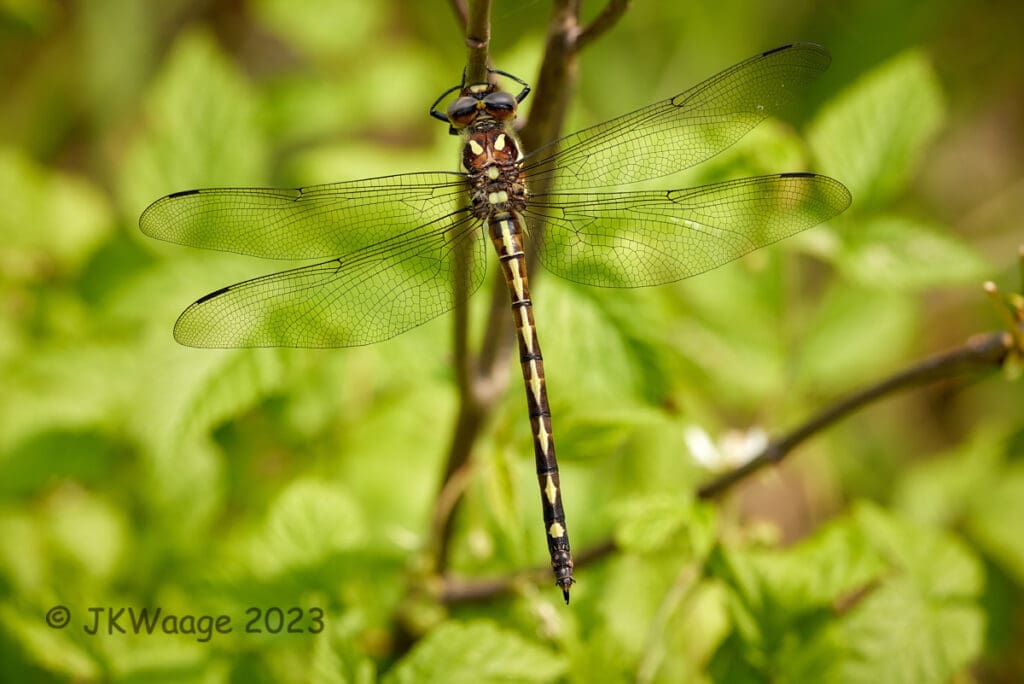
Female Arrowhead Spiketail – named for the arrowhead shaped markings along the top of her abdomen. This is one species you only get to see if you are lucky enough to find one resting away from the water. They are fast fliers along streams and very hard to catch a glimpse of.
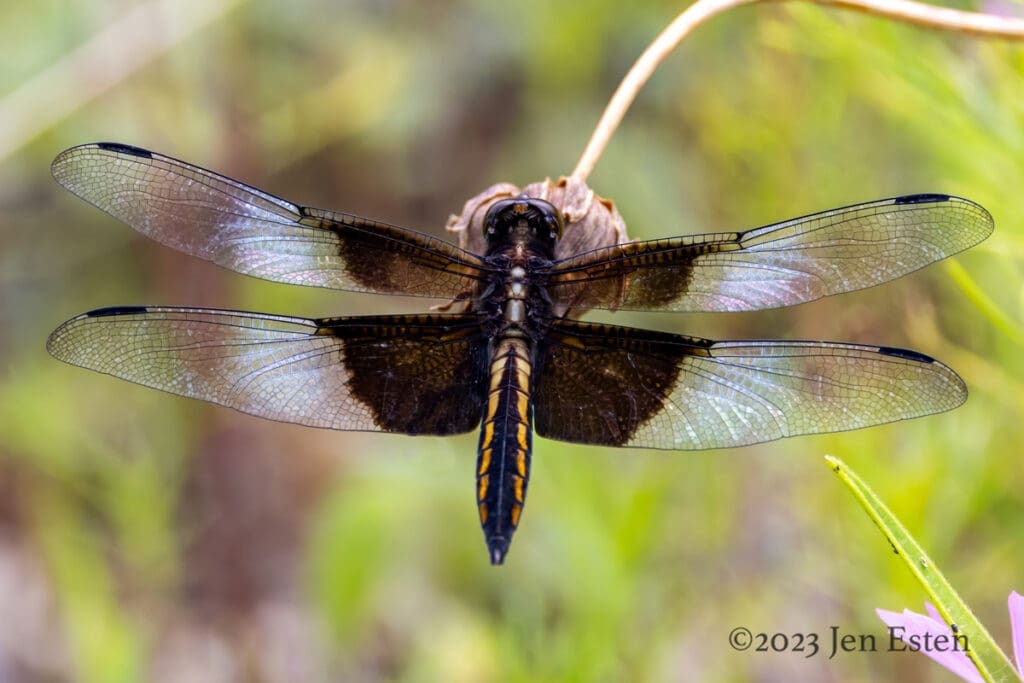
Young male Widow Skimmer feeding in the yard. His abdomen will become a powdery blue/gray before he heads back to the Lake.
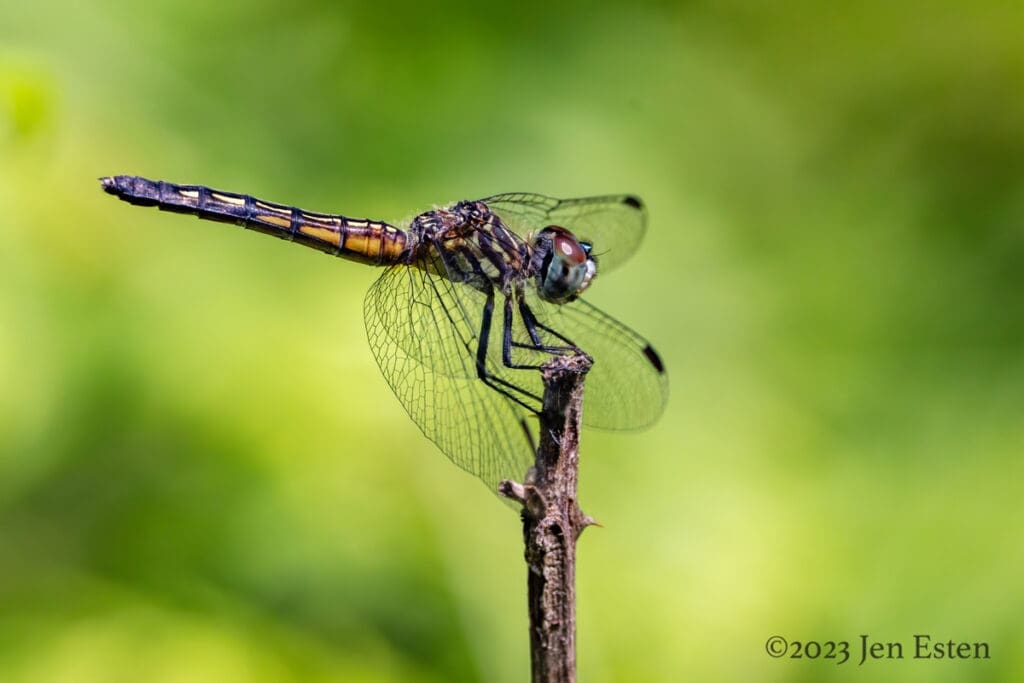
Young female Blue Dasher. This is one of the most common species in our area.

Male Blue Dasher spending time feeding away from the water.
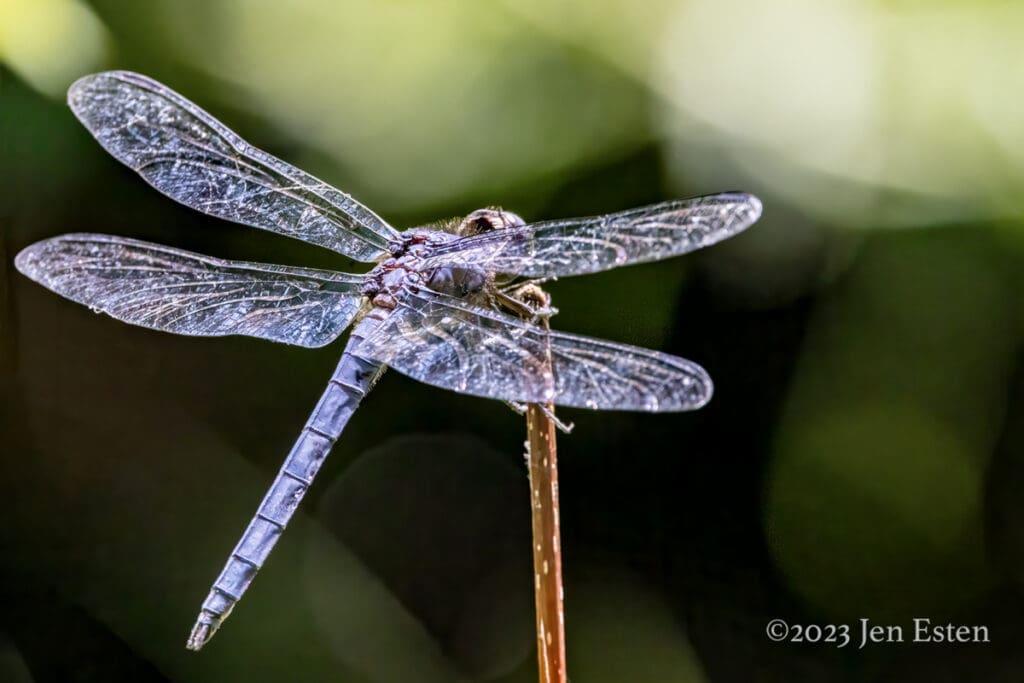
This male Slaty Skimmer has made it through a few storms – its wings have water spots on them just like your car after a rain
Bye for now… Jon and Jen
